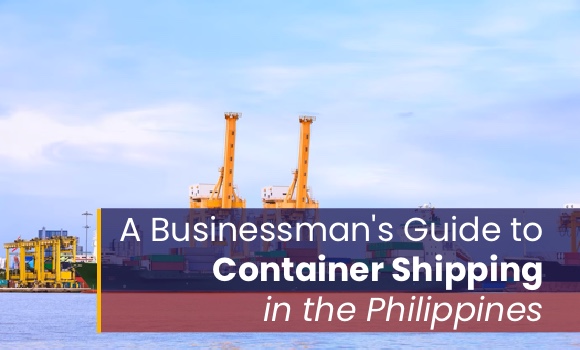The Philippines is a vital destination when it comes to the importation and exportation of goods. Its geography is a significant factor in terms of container shipping around the country. The Philippines is an archipelago and strategically located at the center of regional and global exchange which makes it an ideal trading partner. So if you are planning to expand your business, the Philippines must be included at the top of your list.
Shipping a container to the country is done through ocean freight. There are major ports that regulate trading and transit of goods since the Philippines is surrounded by large bodies of water. For a seamless shipment of container goods to the country, here are 7 essential guides to help you get started with your trading.
6 Important Things You Need to Know About Container Shipping in the Philippines
1. Freight Options for Container Shipping
You have to avail the ocean freight services if you are planning to ship a container to the Philippines. Your goods can be shipped through less than container load or full container load.
- Less than Container Load (LCL) – The most common and less expensive ocean freight option. Your goods will be combined with consignments from other sellers and will be shipped to the destination country. LCL is the best choice if you are shipping in little quantities.
- Full Container Load (FCL) – Your goods will be shipped exclusively and without consolidation of other goods. You can have the container all to yourself. Although there is an additional fee, FCL is a little faster than LCL.
Worklink Services, Inc. (WSI) offers two types of sea freight shipping services: Less than Container Load and Full Container Load. Whatever type of sea freight service you select, you can be assured that the staff is knowledgeable and experienced in all aspects of sea cargo shipping. WSI can assist you in getting your shipment delivered safely to its desired destination.
2. Cost of Shipment
When it comes to the Philippines container shipping, the cost of your shipment depends on various factors. These include:
- Nature of the goods for shipping
- Weight and volume of the cargo
- Size of cargo
- Distance of origin port and destination port
- Selected ocean freight service, either LCL or FCL
- Chosen movement type (door-to-door, port-to-port, port-to-door, or door-to-port)
3. Common Cargo
Ocean freight has lesser restrictions than air freight. You can ship clothes, toys, computers, and gadgets. The most common cargo for container shipping includes dried food, cars, machinery and factory parts, and gas-based fuels.
4. Customs Clearance in the Philippines
Like in other countries, the Philippines has its rules and regulations for imports and sale of commercial goods. It requires customs clearance and documents for all goods before they can be imported into the country. Since the process can be complicated, a reliable freight forwarder can help you with customs clearance requirements for your container shipping.
WSI’s team is skilled to assist and help you facilitate the entire customs clearance process, regardless of the port of entry. WSI can help you avoid costly delays, fines, confiscation of the merchandise, and other penalties that may get in the way of your shipment. It has already helped several companies in processing the legal documents required by their shipment. WSI’s customs brokerage services will spare you from unnecessary delays to get your cargo delivered to your desired destination on time.
5. Major Ports
The public ports are owned by the Philippine Government while the Philippine Port Authority (PPA) is the managing authority. Here are some of the famous ports in the country:
- The Port of Manila
- Port of Cebu
- International Port of Batangas
- Port of Subic
- Port of Cagayan de Oro
- Port of Davao
- Port of Iloilo
- Port of General Santos
- Port of Zamboanga
- Port of Lucena
6. Common Mistakes
To avoid inconvenience and problems in your container shipping, be careful not to commit errors. If you are shipping to the Philippines, take note of the following mistakes:
- Shipping of regulated or restricted items without a license or permit.
- Inaccurate filling out of customs documentation.
- Mislabeled addresses.
- Submission of inadequate paperwork.
- Shipping of prohibited items.
ALSO READ: Why You’ll Need Freight Forwarding Services For Your Business
Since the Philippines is surrounded by bodies of water and strategically situated in the middle of regional and worldwide trading, shipment is done via ocean freight. There are important guides to help businesses when it comes to container shipping in the country. By being aware of the given information and following them, any business can avoid problems and will have a hassle-free shipment of goods to the Philippines. One way to prevent mistakes is to select a logistics company that can assist you in the process.
Worklink Services, Inc. (WSI) is a privately owned Filipino corporation that provides efficient and reliable courier, forwarding, trucking, and logistics services to various domestic industries. WSI provides dependable sea freight services in the Philippines. We will take charge of proper documentation as well as your packing requirements to ensure that your shipment arrives in the best condition. WSI can transport goods to major ports at a price that you can afford.
Do you need any help with your container shipping in the Philippines? Inquire now.


